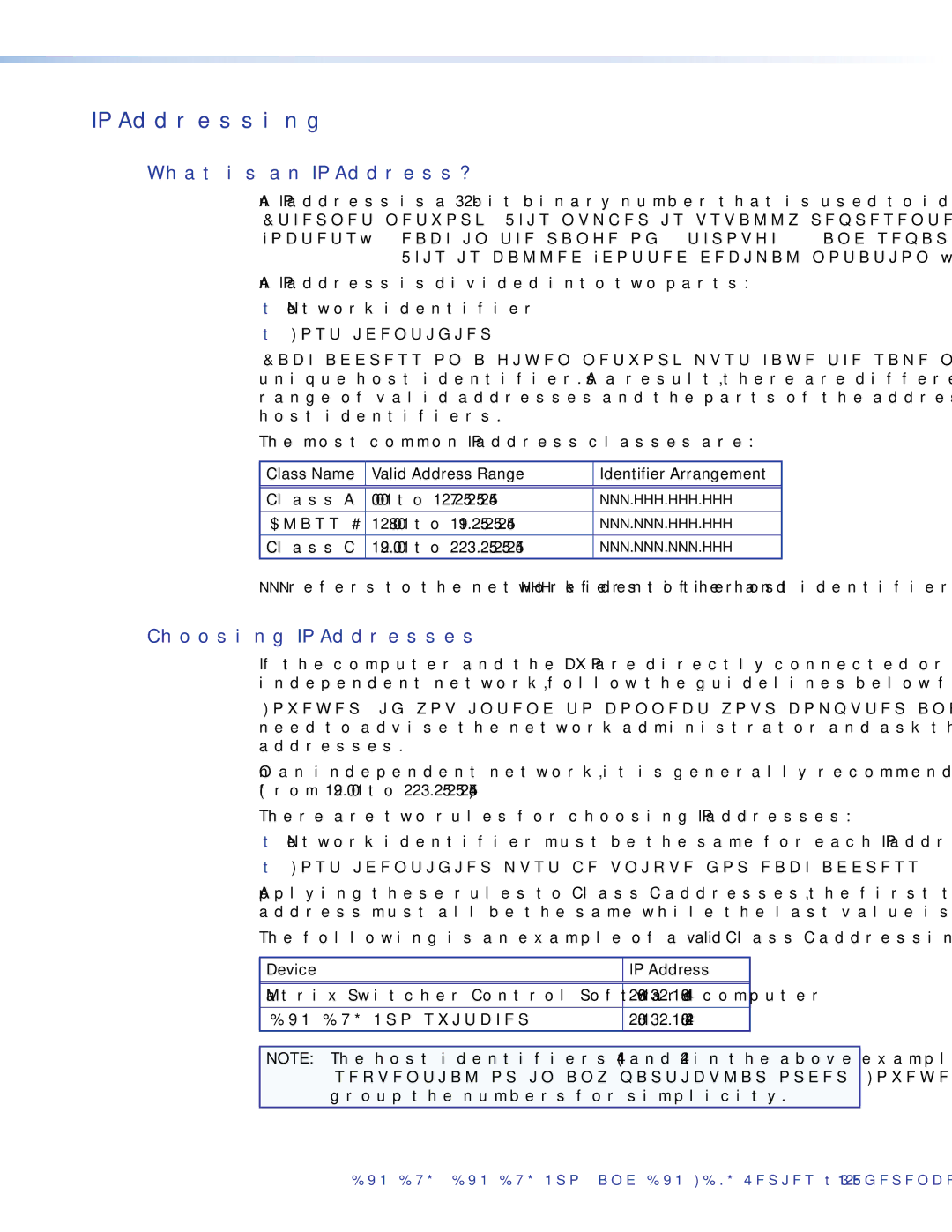
IP Addressing
What is an IP Address?
An IP address is a
An IP address is divided into two parts:
•Network identifier
•Host identifier
Each address on a given network must have the same network identifier value but have a unique host identifier. As a result, there are different classes of addresses that define the range of valid addresses and the parts of the address that are used for the network and host identifiers.
The most common IP address classes are:
Class Name | Valid Address Range | Identifier Arrangement |
|
|
|
|
|
|
Class A | 0.0.0.1 to 127.255.255.254 | NNN.HHH.HHH.HHH |
|
|
|
Class B | 128.0.0.1 to 191.255.255.254 | NNN.NNN.HHH.HHH |
|
|
|
Class C | 192.0.0.1 to 223.255.255.254 | NNN.NNN.NNN.HHH |
|
|
|
NNNrefers to the network identifier and HHH refers to the host identifier.
Choosing IP Addresses
If the computer and the DXP are directly connected or connected via their own independent network, follow the guidelines below for choosing the IP addresses.
However, if you intend to connect your computer and switcher to an existing network, you need to advise the network administrator and ask the administrator to allocate suitable IP addresses.
On an independent network, it is generally recommended that you use the Class C format (from 192.0.0.1 to 223.255.255.254).
There are two rules for choosing IP addresses:
•Network identifier must be the same for each IP address
•Host identifier must be unique for each address.
Applying these rules to Class C addresses, the first three decimal values of your IP address must all be the same while the last value is used to uniquely identify each device.
The following is an example of a valid Class C addressing scheme:
Device
IP Address
Matrix Switcher Control Software computer | 208.132.180.41 |
|
|
DXP DVI Pro switcher | 208.132.180.42 |
|
|
NOTE: The host identifiers (41 and 42 in the above example) do not need to be sequential or in any particular order. However, it is recommended that you group the numbers for simplicity.
DXP DVI, DXP DVI Pro, and DXP HDMI Series • Reference Information 125
